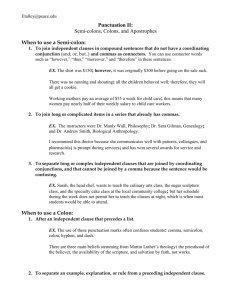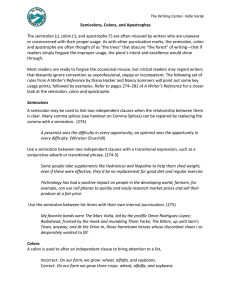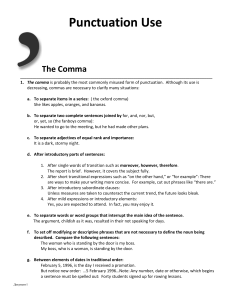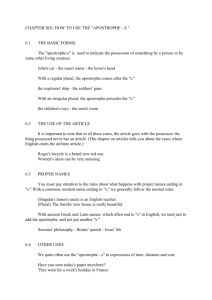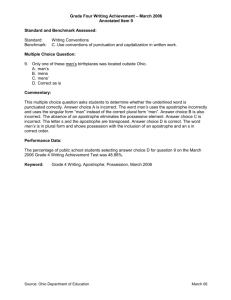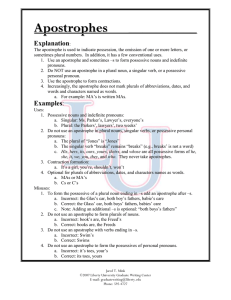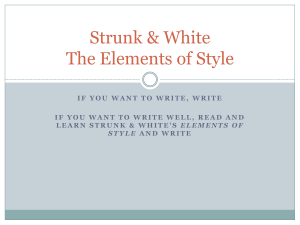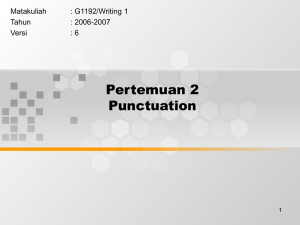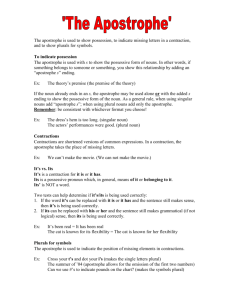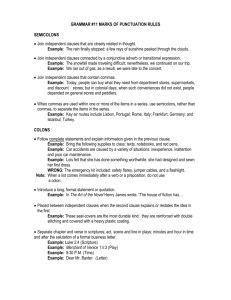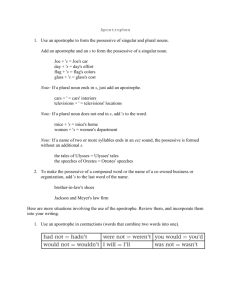A guide to some common errors in punctuation and grammar
advertisement
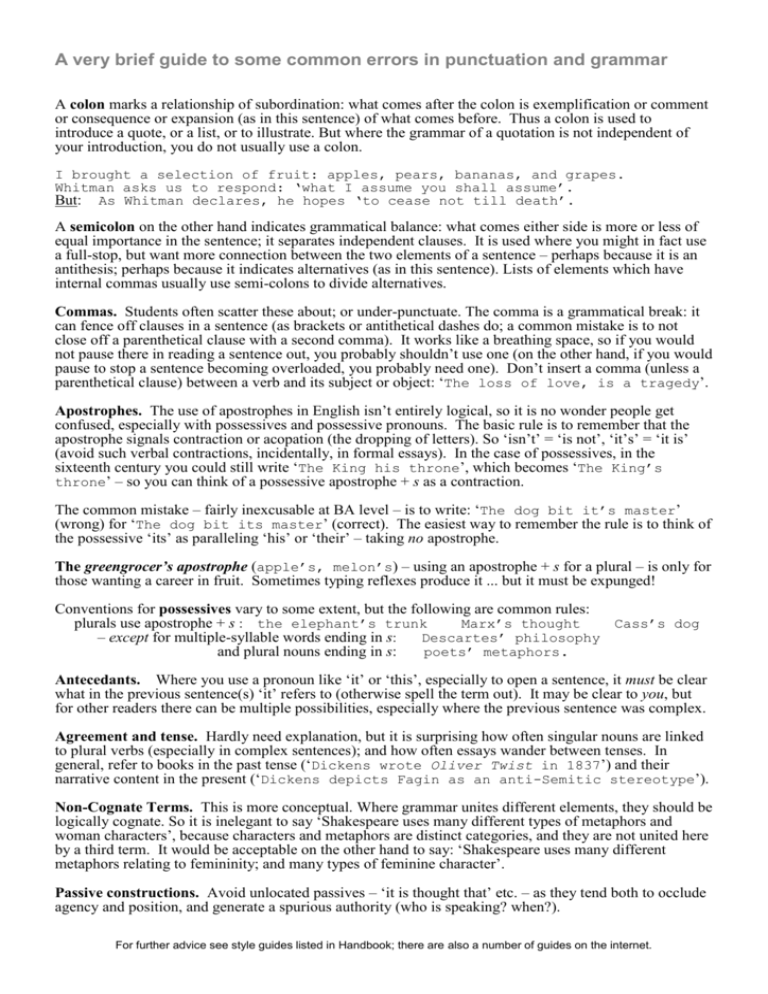
A very brief guide to some common errors in punctuation and grammar A colon marks a relationship of subordination: what comes after the colon is exemplification or comment or consequence or expansion (as in this sentence) of what comes before. Thus a colon is used to introduce a quote, or a list, or to illustrate. But where the grammar of a quotation is not independent of your introduction, you do not usually use a colon. I brought a selection of fruit: apples, pears, bananas, and grapes. Whitman asks us to respond: ‘what I assume you shall assume’. But: As Whitman declares, he hopes ‘to cease not till death’. A semicolon on the other hand indicates grammatical balance: what comes either side is more or less of equal importance in the sentence; it separates independent clauses. It is used where you might in fact use a full-stop, but want more connection between the two elements of a sentence – perhaps because it is an antithesis; perhaps because it indicates alternatives (as in this sentence). Lists of elements which have internal commas usually use semi-colons to divide alternatives. Commas. Students often scatter these about; or under-punctuate. The comma is a grammatical break: it can fence off clauses in a sentence (as brackets or antithetical dashes do; a common mistake is to not close off a parenthetical clause with a second comma). It works like a breathing space, so if you would not pause there in reading a sentence out, you probably shouldn’t use one (on the other hand, if you would pause to stop a sentence becoming overloaded, you probably need one). Don’t insert a comma (unless a parenthetical clause) between a verb and its subject or object: ‘The loss of love, is a tragedy’. Apostrophes. The use of apostrophes in English isn’t entirely logical, so it is no wonder people get confused, especially with possessives and possessive pronouns. The basic rule is to remember that the apostrophe signals contraction or acopation (the dropping of letters). So ‘isn’t’ = ‘is not’, ‘it’s’ = ‘it is’ (avoid such verbal contractions, incidentally, in formal essays). In the case of possessives, in the sixteenth century you could still write ‘The King his throne’, which becomes ‘The King’s throne’ – so you can think of a possessive apostrophe + s as a contraction. The common mistake – fairly inexcusable at BA level – is to write: ‘The dog bit it’s master’ (wrong) for ‘The dog bit its master’ (correct). The easiest way to remember the rule is to think of the possessive ‘its’ as paralleling ‘his’ or ‘their’ – taking no apostrophe. The greengrocer’s apostrophe (apple’s, melon’s) – using an apostrophe + s for a plural – is only for those wanting a career in fruit. Sometimes typing reflexes produce it ... but it must be expunged! Conventions for possessives vary to some extent, but the following are common rules: plurals use apostrophe + s : the elephant’s trunk Marx’s thought Cass’s dog – except for multiple-syllable words ending in s: Descartes’ philosophy and plural nouns ending in s: poets’ metaphors. Antecedants. Where you use a pronoun like ‘it’ or ‘this’, especially to open a sentence, it must be clear what in the previous sentence(s) ‘it’ refers to (otherwise spell the term out). It may be clear to you, but for other readers there can be multiple possibilities, especially where the previous sentence was complex. Agreement and tense. Hardly need explanation, but it is surprising how often singular nouns are linked to plural verbs (especially in complex sentences); and how often essays wander between tenses. In general, refer to books in the past tense (‘Dickens wrote Oliver Twist in 1837’) and their narrative content in the present (‘Dickens depicts Fagin as an anti-Semitic stereotype’). Non-Cognate Terms. This is more conceptual. Where grammar unites different elements, they should be logically cognate. So it is inelegant to say ‘Shakespeare uses many different types of metaphors and woman characters’, because characters and metaphors are distinct categories, and they are not united here by a third term. It would be acceptable on the other hand to say: ‘Shakespeare uses many different metaphors relating to femininity; and many types of feminine character’. Passive constructions. Avoid unlocated passives – ‘it is thought that’ etc. – as they tend both to occlude agency and position, and generate a spurious authority (who is speaking? when?). For further advice see style guides listed in Handbook; there are also a number of guides on the internet.

